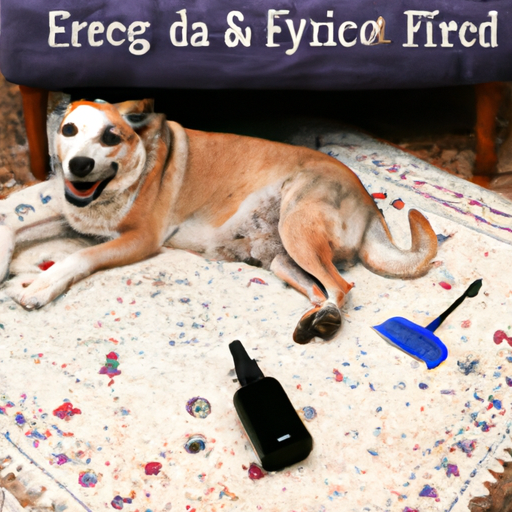Understanding the Flea Problem
First off, you need to understand what you’re dealing with. Fleas are tiny, agile pests that feed on your dog’s blood. Not only are they annoying for your pet, but they can also transmit diseases. These pests are not a reflection of your cleanliness or your pet’s. They are just opportunistic creatures that will take advantage of any warm, furry host.
Recognizing the Signs of Flea Infestation
To get rid of fleas, you first need to recognize the signs of an infestation:
- Excessive scratching and biting: If your dog is scratching and biting itself more often, it may have fleas.
- Red patches or sores on the skin: These are signs of a flea bite reaction.
- Flea dirt: This looks like black pepper or tiny dark specks on your dog’s fur.
Effective Treatments for Flea Infestation
Fortunately, there are several effective treatments for a flea infestation.
- Topical Treatments: These are applied directly to your dog’s skin and kill fleas on contact. Some brands can also prevent future infestations.
- Oral Medications: These are pills that your dog ingests. They work by killing fleas once they bite your dog.
- Flea Collars: These release chemicals that repel fleas. They can be effective but may not work as well for severe infestations.
- Flea Shampoos and Sprays: These can kill fleas on contact but may not prevent future infestations.
| Type | Pros | Cons |
|---|---|---|
| Topical Treatments | Long-lasting, Kills on contact | May cause skin irritation |
| Oral Medications | Kills fleas quickly, Easy to administer | Requires a vet prescription |
| Flea Collars | Convenient, Long-lasting | May not be effective for severe infestations |
| Flea Shampoos and Sprays | Instant results | Short-term solution |
Preventing Future Flea Infestations
The best way to deal with fleas is to prevent an infestation in the first place. Here are some tips:
- Regular Vet Visits: A vet can provide suitable flea prevention treatments for your dog.
- Keep Your Home Clean: Regular vacuuming and washing of your dog’s bedding can help prevent fleas.
- Treat Your Yard: Fleas can live in your yard. Using a flea spray or hiring a professional pest control service can help.
Natural Remedies for Flea Control
If you prefer a more natural approach, there are several home remedies that can help control fleas:
- Diatomaceous earth: This is a powder made from tiny fossilized aquatic organisms. It’s non-toxic to dogs and humans but lethal to fleas.
- Flea comb: A fine-toothed comb can help remove fleas from your dog’s coat.
- Apple cider vinegar: Some pet owners swear by this natural flea repellent. However, its effectiveness is still debated.
FAQ Section
Q: How quickly can fleas multiply?
A: Fleas can lay up to 50 eggs a day. So, a small problem can quickly become a major infestation.
Q: Can fleas live in human hair?
A: Fleas prefer animals with lots of body hair. However, they can occasionally jump onto humans.
Q: How often should I treat my dog for fleas?
A: This depends on the type of treatment you’re using. Some last for a month, while others can last up to 12 weeks.
Remember, your dog’s comfort and health should always be your top priority. By recognizing the signs of a flea infestation and knowing how to treat it, you can ensure your dog stays happy and healthy.



